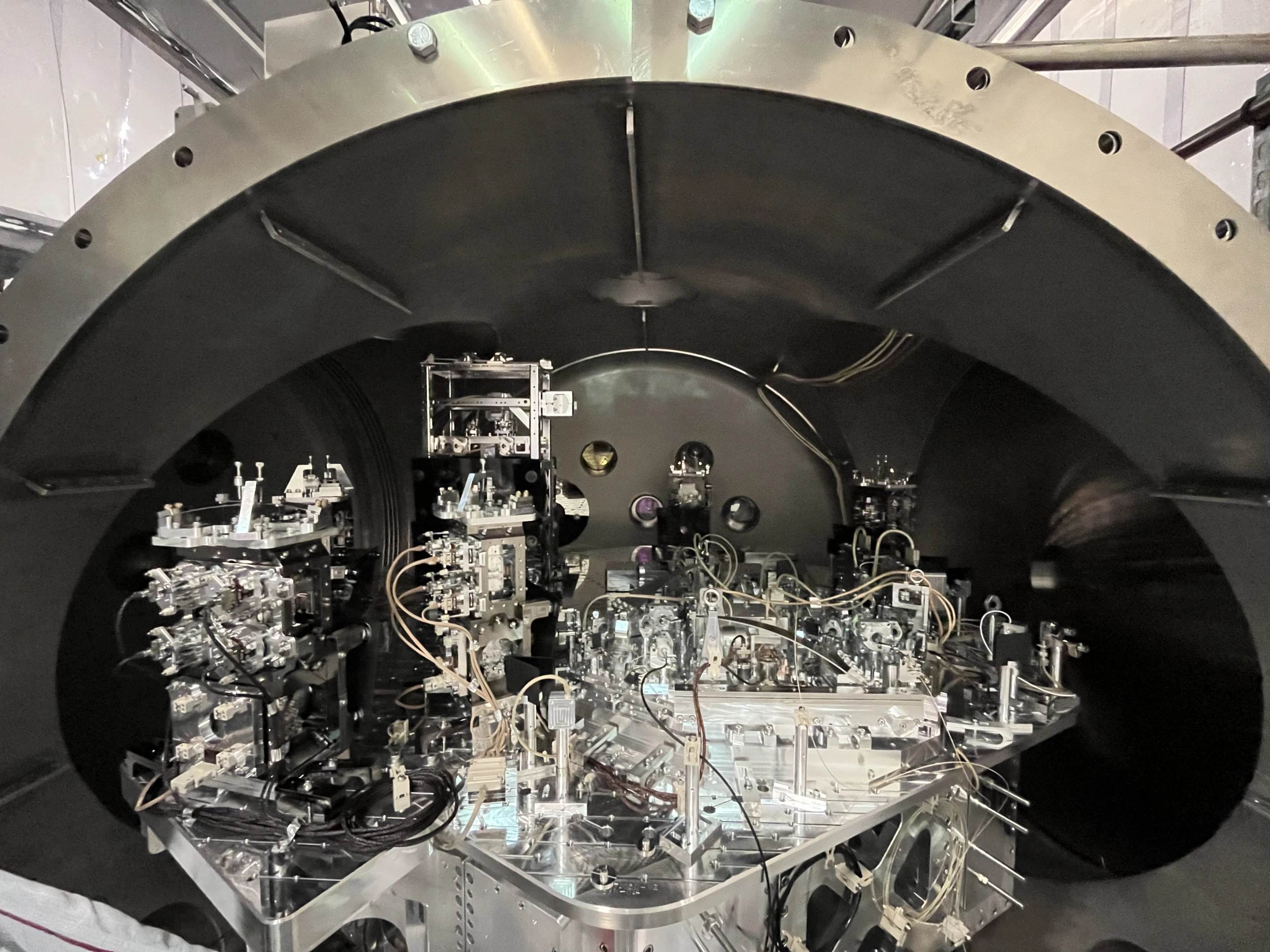Gravitational wave facilities measure distortions in the fabric of spacetime down to 10 quadrillionths the width of a hair – small enough to hear interference from particles popping in and out of existence. Now the LIGO facility has pushed beyond this quantum limit by “squeezing” laser light, which will boost gravitational wave detections by about 60%.
When extremely massive objects like black holes collide, the energy released is powerful enough to send ripples through reality itself. These gravitational waves were first predicted by Albert Einstein more than a century ago, but it wasn’t until 2015 that scientists finally detected them directly for the first time.
The facility responsible for this momentous detection was the Laser Interferometer Gravitational-Wave Observatory (LIGO), which works by beaming lasers down two long tunnels, bouncing them off mirrors and measuring how the light returns. By controlling for other effects and watching very carefully, the detector can sense when the laser beam is distorted by even a tiny amount – less than the width of a proton – which indicates gravitational waves have washed by. In the years since, dozens of gravitational wave signals have since been picked up by LIGO and other detectors.
But the sensitivity of these facilities has a limit, which is dictated by the laws of quantum physics themselves. While a vacuum – including those in the tubes containing LIGO’s lasers – is commonly thought of as completely empty space, such a thing is impossible to achieve. Quantum fluctuations mean that particles are constantly popping into existence, living for fractions of a fraction of a second then vanishing again. This faint crackling of quantum noise interferes with LIGO’s observations and puts a hard limit on them.

Now, LIGO scientists have found and demonstrated a way to push through, using a technique called quantum squeezing. This taps into the uncertainty principle, which states that the more precisely you know one feature of an object, the less precisely you can know others. The most common example is a particle bouncing around in a box – if you can accurately measure its position at a given time, you’ll know less about its momentum, and vice versa.
In this case, the scientists manipulated the uncertainty principle to get more out of LIGO’s lasers by tweaking two properties of the light – phase and amplitude. Specialized crystals added to the tubes during the 2019 upgrade “squeeze” the phase of the light so that the photons arrive at the sensors on more predictable timelines. But of course, this makes the amplitude less certain, which means the laser causes the mirrors to vibrate and mask any low-frequency gravitational waves it might otherwise detect.
To get around this, a new instrument has been installed on LIGO called a frequency-dependent squeezing cavity. As the name suggests, it works by squeezing different properties of the light for different frequencies, to give the best of both worlds. For the most precise gravitational wave detections, scientists need more certainty in the amplitude of low frequencies and in the phase of high frequencies, and the system now allows this.
“Before, we had to choose where we wanted LIGO to be more precise,” said Rana Adhikari, an author of the study. “Now we can eat our cake and have it too. We've known for a while how to write down the equations to make this work, but it was not clear that we could actually make it work until now. It's like science fiction.”
By smashing through this quantum limit, the team says that the improved precision will allow LIGO to detect about 60% more gravitational wave events than previous runs. LIGO’s partner observatory Virgo, located in Italy, is also expected to start using frequency-dependent squeezing technology before the end of next year.
The research is due to be published Physical Review X. The team describes the work in the video below.
Source: Caltech





